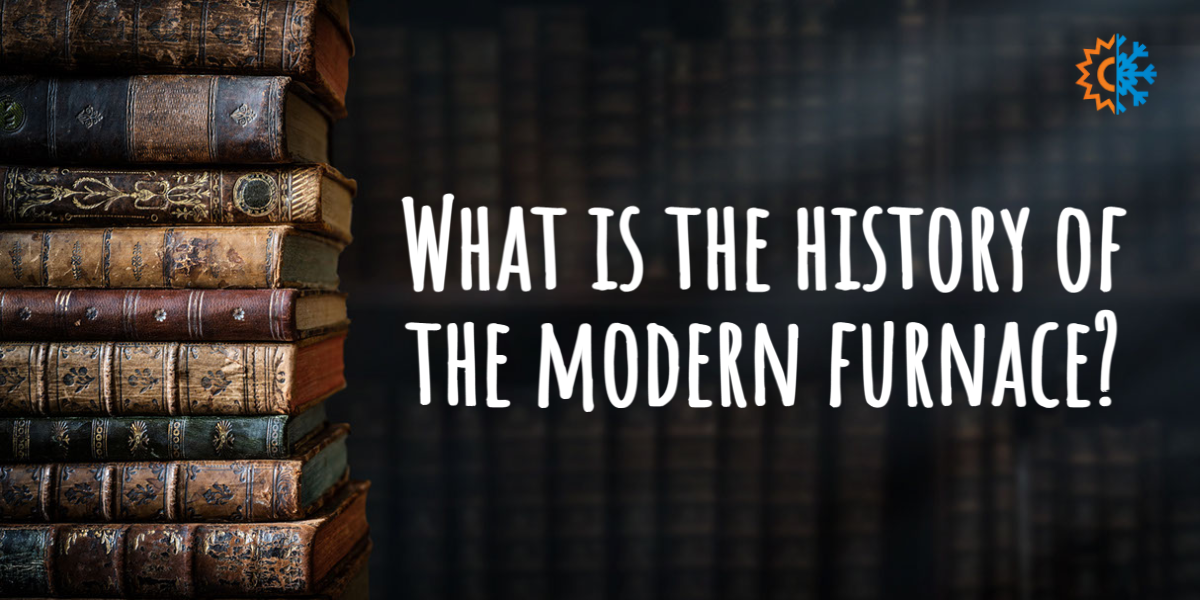Humanity’s struggles include the trials and errors faced to meet basic needs essential for survival. Consistently, we encounter challenges that we must overcome. Nature’s elements are sometimes intense and alarming. Safeguarding ourselves from Ohio’s unforeseen weather can prove to be paramount. When you have a family, the ability to manage how you and your loved ones receive warmth during frigid temperatures is crucial. When I shifted my attention to our ancestors, I immediately wondered what parents must have endured when aiming to supply heat for their families. I am overwhelmed with appreciation for the technological advancements in the Heating & Cooling universe! At LRF Maintenance, Heating & Cooling, we want to give you a quick sermon about the modern-day furnace and its history to understand better the path that was paved to get us to where we are today. Let’s reflect briefly; gaze through time with me to view how our HVAC systems materialized into what they are today.
How Did Early Civilization Keep Warm?
Use and control over fire were not as direct as you may suspect. Still, a generous amount of literary proof indicates how humans managed to control fire through minor hints of wood ash dating back some 1,000,000 years ago. Wow! As much as I enjoy relaxing by a cozy fire, I can’t even begin to hold onto the thought of this being my family’s primary source of heat. Nowadays, we live in a culture where we can appreciate a snuggly warm fire, excluding the need for it to be our only heat source, and for that, I am grateful!
When Was the First Cast Iron Radiator Patent?
Now let’s look to the year 1841. At this point, we start to see patents for cast iron radiators’ evolution and mass productions flowing out of the woodwork. Cast iron radiators change water into warm vapor, heating the surrounding air through radiation and convection (hot air goes up while cool air goes down). But unfortunately, this approach is tiresome, resulting in a deficit for staying warm during the grueling winter months.
The Bunsen Burner Was Invented When?
The man responsible for developing the bunsen burner in 1855 was Dr. Rovert Bunsen. The bunsen burner is a gas burner that utilizes a naked gas flame for heating, sterilization, and combustion. This product generated gas, propane, and oil-fired heating systems. It’s sad to say, but a gas heater near the end of its life will not function efficiently or distribute heat evenly. Eventually, this approach will have you and your family paying an unwarranted amount of money. But, earnestly, no one desires to spend more for less.
When Did the Use of Electricity for Heat Begin?
Thomas Edison invented the electric heater in 1883, changing electrical energy into heat energy. Albert Marsh, a lesser-known man, unveiled chromel in 1905. Chromel is an alloy comprised of nickel and chromium and is more efficient than most heating components, allowing for long-lasting high-resistance wires to output a secured heating element. Many understand this to be the actual beginning of electrical heating. Now, I don’t like to be downbeat, but I don’t want to deceive you. Unfortunately, too many people still perish in fires caused by electrical heaters, and if your house comes with an outdated electrical heater, it may be time to speak with our experts. For these bases, among others, I will be surrendering my heating and cooling needs to the knowledgeable staff at LRF Maintenance, Heating & Cooling.
The Central Heating System Was Patented By Who?
In 1919, a woman named Alice Parker first patented the central heating system, giving humans the capacity to alter the temperature of their homes with quicker and better results. A central heating system directs warm air to the interior of one’s home entirely. The heat reaches out to multiple rooms from a central location. When blended with other processes, we can fix our indoor climate to our preferences. The central heating system is an excellent bound from fire’s lone capabilities!
What Makes the Modern-Furnace So Great?
The modern-day furnace works in the way of warming a home by evenly distributing refined air throughout our homes. Additionally, the most up-to-date models can be linked to our smart devices, creating the possibility of modifying our home’s surroundings simply by pre-selected preferences and settings. So, if your heating unit is 15 years old, has a lengthy history of repairs, or the expense of repairs requires too much from your bank account, do not be afraid. LRF Maintenance, Heating & Cooling is able and willing to help you with installing and substituting your old furnace with a more energy-efficient, customizable, current alternative. Unfortunately, hesitating to have skilled personnel install your furnace will likely result in a shorter life for your furnace. Prevent the Preventable!
LRF Maintenance, Heating & Cooling hope you feel more educated on the history of the modern furnace and find solace in knowing we can and will meet you and your family’s heating & cooling needs thoroughly! We are eager to hear from you! Call us today at (614) 837-4822, or schedule an appointment now by clicking here!




